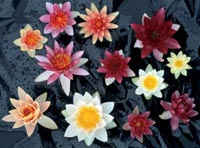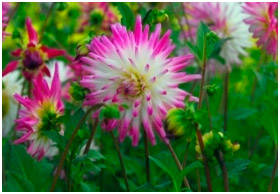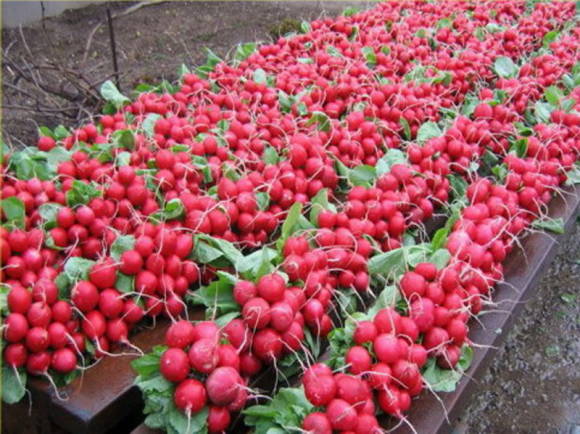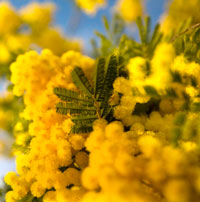
Batun onion in many regions of Russia is the most popular onion grown for greens. The reasons for its wide distribution are the ability to collect feathers in early spring, as soon as the ground thaws, and undemanding care.
Outwardly, the batun is difficult to distinguish from the onion. He has the same leaves with a pipe, but larger and longer in size. The bulb of the batun is not the same as that of the onion, but false (small thickening). Therefore, the batun is grown only for the sake of greenery. Its underground organs remain for several years, and the leaves and peduncles die off annually in the fall.
It is a very valuable vegetable and provides early vitamin production. When there is still snow on the ground here and there, magnificent shoots of a trampoline appear on the thawed patches.
When grown under film shelters, its plants reach consumer ripeness, that is, the length of the leaves is at least 30 cm, by the end of April or in the first decade of May.
The trampoline branches strongly, forms many hollow, powerful leaves, the growth of which is gradual. The height of the false stem, depending on the variety, ranges from 5 to 15 cm.From the second year, the plant throws out arrows, the height of which reaches 45 cm.
Its leaf mass is growing constantly, while vegetation is possible. It grows well in one place for 3-4 years. Then the bushes grow strongly and their yield is greatly reduced.
How to grow batun onions
You can grow a batun both in annual and perennial crops. With an annual culture, the onions are dug out completely, and with a long-term culture, only the leaves are cut off.
It should be remembered that the onion, like all perennials, should not be placed in low, flooded areas.
Predecessors. The predecessors can be all vegetable crops, except for onions and garlic, leaving the soil clear of weeds, under which organic fertilizers were applied. If the site is littered with perennials, then I simply do not advise you to grow onions on it. Remember that the batun is a poor competitor for weeds.
The soil. Batun gives high yields on structured, well-filled with organic fertilizers, sandy loam or light loamy soils. Does not tolerate heavy clay and waterlogged areas, requires obligatory liming of acidic soils.
The soil for growing a trampoline must be carefully prepared. For the autumn digging, it is necessary to make 1 sq. meter, depending on the composition of the soil, up to 1 bucket of rotted compost, 1 tbsp. spoonful of superphosphate and potash fertilizers, 1 glass of wood ash.
On heavy soils, it is additionally necessary to add 0.5–1 buckets of coarse sand and lime, depending on the acidity of the soil. In spring, under harrowing, add 1 teaspoon of ammonium nitrate.
Sowing seeds... Two days before sowing, the seeds are soaked in warm water or a solution of micronutrient fertilizers for 12 hours, then dried until flowable. Significantly increases the viability of seeds by bubbling them in oxygen-enriched water using an aquarium compressor for 18-24 hours.
You should not allow them to peck, because seeds with long sprouts will make sowing much more difficult for you. If you sow with wet seeds, then remember that the soil must be sufficiently moist, otherwise the seedlings, falling into dry soil, may die.
Seeds are usually sown in early spring, as soon as the soil allows. But you can also sow seeds in summer and before winter. Summer sowing can be done after radishes, dill, lettuce and other early ripening crops grow on the site, no later than the end of July, so that the plants develop well before the onset of cold weather, accumulate a supply of nutrients and do not die in winter.
With summer sowing, green onions are ready for mass harvesting in June next year, and with winter sowing - by August next year. The seeding rate for perennial crops is 1–1.5 g per 1 sq. m.
Seeds are sown in grooves to a depth of 1–2 cm, the distance between rows is 15–20 cm. In autumn sowing, the garden bed should be covered with peat, and in spring sowing, watered with warm water and covered with foil. After sowing the trampoline, the soil should be slightly compacted or watered.
For early spring sowing, the beds can be covered with lutrasil or plastic wrap on top. Mulching with these materials increases the soil temperature under them by 4–5 ° C and speeds up the appearance of plants for several days.
After the emergence of seedlings, the film must be removed, and the lutrasil can be left. It not only creates favorable conditions for young seedlings, but also well protects them from damage by pests.
Transfer. If necessary, after the end of flowering, the bushes are cut into 3-4 parts and planted at a distance of 40 cm from a row and 25-30 cm between plants.

Care behind the baton consists in loosening row spacings, weeding, fertilizing with organic fertilizers, watering.
To speed up the production of greens in early spring, you need to install a wire frame over the garden bed in the fall. And in the spring, when there is still snow, sprinkle the bed with ash or peat chips and immediately lay the film. This technique will speed up the production of early greens by 10-12 days.
Top dressing. As soon as shoots appear on the bed, the plants must be fed with urea (1 teaspoon per 1 sq. M), scattered over the bed, sprinkled with warm water and be sure to spray with Epin Extra (1 ampoule per 5 liters of water) to increase resistance in stressful situations.
About a month before stable frosts, the batun is fed with potash fertilizers at the rate of 10-15 g per 1 sq. m. Potassium promotes better overwintering of the batun.
Harvesting greens. During the summer, 3 cuts of greens are carried out. Immediately after it, the plants are fed with a solution of nitrophoska (2 tablespoons per bucket of water) and sprayed with a solution of "Epin Extra" with "Cytovite" (1 ampoule per 5 liters of water).
If in the middle of summer you don't need the greens during the second cut, you should cut them off and discard them. after it, delicate leaves will begin to grow, and there are very few arrows. In the second half of August, you should not cut the leaves so that the plants are better prepared for winter.
The best quality of green feathers occurs in the second year of cultivation. In subsequent years, the quality of green onions deteriorates.
Batun onion in annual culture

In recent years, the annual batun culture has begun to attract attention. When sowing in summer, the plants form 2–5 leaves by autumn and leave in winter, and in early spring they start to grow and are ready for harvesting in late May - early June. In this case, the seeding rate of seeds should be increased to 2-3 g per 1 sq. m, which will increase the yield by 1.5-2 times.
Seeds in a row can be distributed evenly over the entire length of the row or sown 2-3 seeds per nest, and nests can be placed 15–20 cm apart.
You can grow batun and seedlings. In this case, 4-5 plants grown in one pot are planted with a distance of 10-15 cm between these pots. But in this way, it is better to grow the batun only in an annual culture.
Forcing onion batun
Batun onions are good for winter forcing. To do this, in the fall, they prepare bushes and store them at a temperature close to zero degrees. They are planted in early December in boxes, usually by bridge. At the same time, the onion grows faster and gives a greater yield than onions.
"Ural gardener" No. 21, 2019







